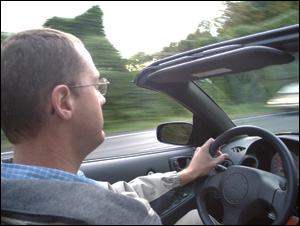 Living (and loving) Life
Living (and loving) Life
Government statistics show that a fifth of accidents are caused by tiredness and these accidents are most likely to lead to death or serious injury. The good news is that this five point plan will tell you how to keep alert when you drive all day:
1 – Plan Regular Breaks
Plan regular breaks into the journey time and try to have a quarter of an hour rest every two hours. Adding these breaks into the overall journey time will ensure they don’t get forgotten about.
Use the break time to get out of the vehicle and walk around outside. This will improve alertness by increasing blood circulation. It is vital to take these breaks, even when they don’t feel necessary.
2 – Stay Hydrated
Dehydration makes drivers sluggish so it is a good idea to top up fluid levels during breaks. On the road, it can be easy to forget to drink. However, it is important to aim for the recommended daily minimum of eight glasses of water or the equivalent. Anyone who is beginning to feel tired should consider having a caffeine drink or a couple of cups of coffee.
3 – Have Forty Winks
A quick nap can help to tide a tired driver over until they can get a proper sleep. The most important thing is to find a safe place to stop, away from the motorway. The best way to nap is to have a caffeine drink and then try to sleep. This may sound counterintuitive, but it actually takes around twenty minutes or so for caffeine to kick in. This leaves plenty of time for a quick snooze. Before setting off again, it is best to take a brisk walk to wake up properly.
4 – Keep Your Blood Sugar Even
Low blood sugar can lead to tiredness so it makes sense to keep blood sugar on an even keel. The easiest way to do this is to eat regularly. Plan in three regular meals each day, along with two or three planned snacks. It can be tempting for drivers to get by on food which is high in fat, sugar and salt and these are fine for an occasional treat or an emergency wake-up call. But for most meals and snacks, it is better to seek out healthier options which are lower in fat, sugar and salt. For example, nuts are a good nutritional choice and fruit is great for when an energy boost is needed.
5 – Keep An Eye On The Clock
Drivers are more likely to have accidents at certain times of the day and night. Unsurprisingly, between midnight and six o’clock in the morning is a bad time for accidents. But the mid-afternoon slot between two and four o’clock is also a risky time. If there is any choice over journey times, try to avoid these risky periods. If the journey time cannot be changed, at least be aware of the potential for increased risk and take extra precautions such as longer and more frequent breaks.
Photo credit: David Resseguie